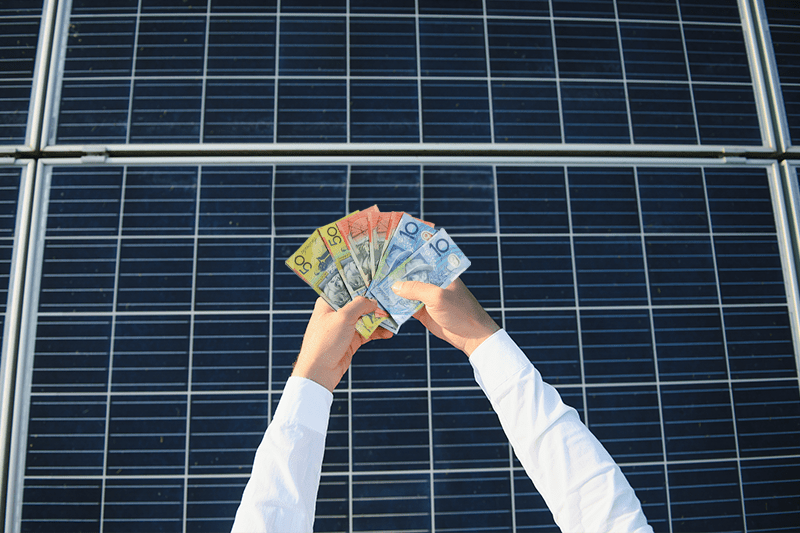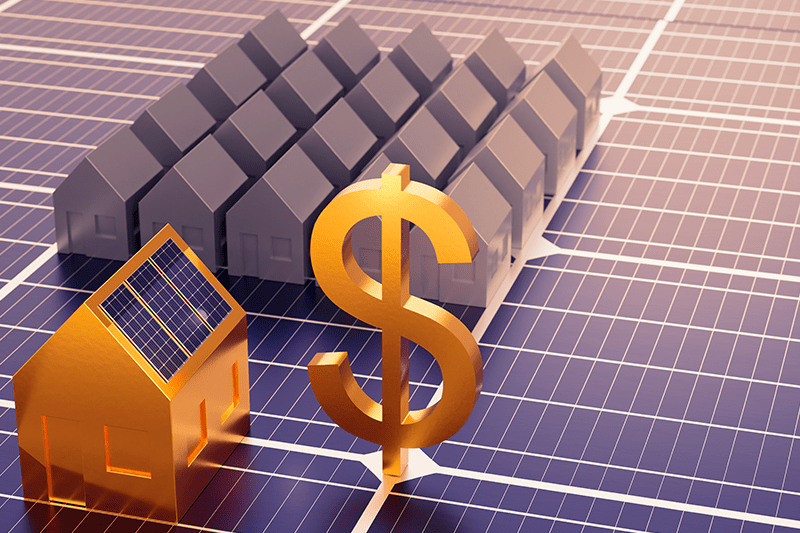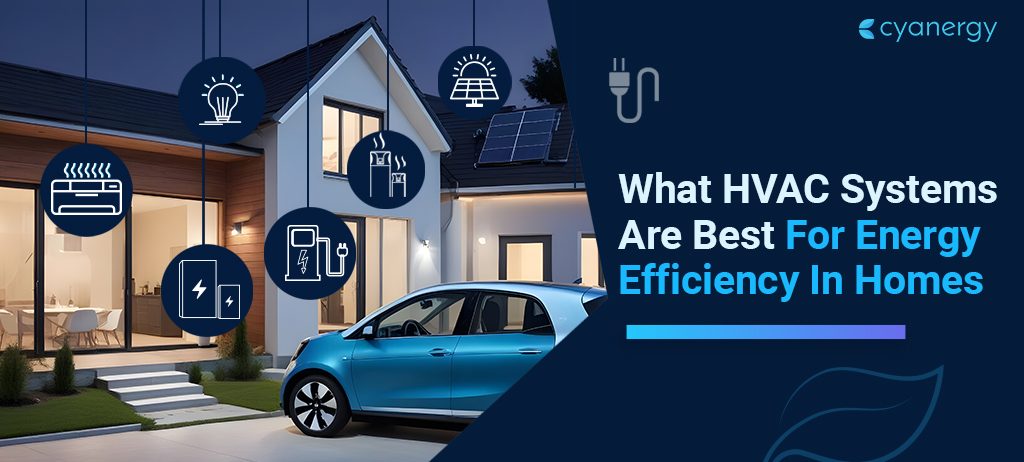In the quest to make the world better for the future, people around the globe are relying more on renewable energy sources like solar and wind power. Australia, rich in natural resources and smart technology, is leading this change.
The government of Australia knows that businesses play a big role in making renewable energy more available.
That’s why they’ve put some renewable energy tax incentives for businesses in Australia. These tax incentives encourage companies to invest in clean energy solutions.
The Australian government has set goals like the Renewable Energy Target (RET) as a follow-up of the Paris Agreement. To help meet these goals, the government offers various incentives to push businesses towards using renewable energy sources.
Understanding how these incentives work is important for businesses seeking renewable energy. These incentives offer different paths for businesses to go green, be innovative, and grow the economy.
Moreover, switching to renewable energy is about more than just money. It can also make businesses sustainable and create more value. Plus, it helps them prepare for any laws or market changes.
What Are Renewable Energy Tax Incentives?
Renewable Energy/Green Energy Tax Incentives are the Australian government’s financial incentives to businesses that invest in renewable energy.
These incentives encourage businesses to adopt more sustainable practices by offering monetary rewards for their environmental initiatives.
Renewable Energy Tax Incentives are also benefits that the government gives to businesses in Australia when they use renewable energy sources, like the sun or wind, to power their operations.
These incentives help businesses save money or get extra cash when investing in renewable energy technologies.
For example, businesses might get tax breaks or grants to help them buy solar panels or wind turbines.
By offering these financial perks for being eco-friendly, the Australian government wants to make a world where businesses do well and do good for the planet.
The government wants to encourage more businesses to switch to renewable energy. It helps the environment by reducing pollution and helps businesses save money in the long run.
Overall, Renewable Energy Tax Incentives are rewards for businesses that choose to go green and use cleaner, renewable energy sources.
Types of Incentives
Renewable Energy Tax Incentives: These are special benefits given to businesses when they put money into renewable energy like solar panels, wind turbines, or hydroelectric systems.
Feed-in Tariffs: Businesses get paid for any extra energy their renewable systems make and send back to the power grid.
Energy-Efficient Building Incentives: These reward companies that spend money on making their buildings use less energy. This could be fixing up old buildings to be more efficient or building new ones with eco-friendly designs.
How to Efficiently Use the Renewable Energy Tax Incentives?

Understanding Your Energy Needs:
Before you decide to invest in green energy, it’s smart to take a close look at how much energy your business needs. This way, you can determine which renewable energy option fits you best.
For example, solar panels might be a great choice if your business uses a lot of electricity during the day.
But wind turbines might be more suitable near a windy area. By understanding your energy needs, you can make a smarter investment to save you more money in the long run.
Learning the Rules:
Knowing the rules and regulations for green energy investments is also important. It ensures that you’re eligible for the tax incentives.
Different areas might have different rules about where to install renewable energy systems or how much energy you need to generate to qualify for incentives.
You can understand these rules upfront and avoid any surprises later. You can also ensure your investment pays off.
Proper evaluation of your energy needs and understanding the legal requirements can make the most of green energy tax incentives and save money while helping the environment.
Use Tax Benefits to Improve Energy Efficiency
The Energy Efficiency Council has guided using tax benefits to improve energy. This guide talks about how getting tax breaks can help businesses make changes to use energy better.
The guide explains how businesses can benefit from energy improvements and examines specific tax incentives to make these changes more affordable.
It gives information and examples to show how these tax breaks can work for different businesses. You can find the Energy Efficiency Council website guide to learn more.
Renewable Energy Tax Incentives
Research and Development Tax Incentive (R&DTI)
Instant Asset Write-off
The instant asset write-off lets small businesses get deductions immediately instead of waiting for things to lose value over time.
If a small business makes less than $10 million a year, it can deduct the cost of assets (like equipment) under $20,000 each.
This rule is set to be in place from July 1, 2023, to June 30, 2024. Small businesses can use this for more than one asset.
Small businesses can use the $20,000 instant asset write-off and the Small Business Energy Incentive bonus deduction if they meet the requirements.
But remember, these rules have yet to be officially announced. The government is still working on making them into laws.
To find out more, you can check the Australian Taxation Office website.
Small Business Energy Incentive
On April 30, 2023, the Australian Government said small businesses making less than $50 million a year could get extra savings.
They can save 20% more on things that help them use electricity better and use energy more wisely.
The things they can save money on must be new or improved between July 1, 2023, and June 30, 2024.
This new rule will help small businesses to:
- Change their heating and cooling systems to use electricity
- Get new fridges and cooktops that use energy better
- Install batteries and special pumps for heating.
Small businesses can save up to $100,000 on these things, and the most they can save on taxes is $20,000 per business.
Other Grants and Funding

Different government programs give money to help businesses pay for projects that make their energy use more efficient.
However, the rules for who can get these grants and how to apply can differ depending on where you are. So, always check the guidelines for each program.
There are other ways to get money for your projects, like getting part of the money from other organizations, taking out loans, or using tax breaks.
No matter how you decide to get money, looking into how much energy you use first is smart. Specialized companies can check your business and suggest ways to save money.
Remember, this is general information. If you’re serious about a project, it’s best to talk to an expert who can give you advice tailored to your situation. You can ensure you’re making the right choices for your business.
Large-Scale Renewable Energy Target (LRET)
Large-Scale Renewable Energy Target (LRET) wants to build many big renewable energy power stations in Australia.
It works like this: there’s a market where Renewable Energy Certificates are made and sold. These certificates are called large-scale generation certificates (LGCs).
The idea behind LRET is to encourage the creation of renewable energy power stations across Australia. These power stations produce Large-scale Generation Certificates (LGCs), which they can sell.
The people or companies who buy LGCs are:
- Businesses under the RET (mostly electricity sellers) must buy LGCs from the market and give these certificates to the Clean Energy Regulator (CER) each year.
- Companies and individuals who want to show they’re reducing emissions, using renewable electricity, or using offsets like Australian carbon credit units.
LRET will be in place until 2030.
Small-Scale Renewable Energy Scheme (SRES)
The Small Renewable Energy Scheme (SRES) handles Small-scale Technology Certificates (STCs).
These are given to small renewable energy systems like home and small-business solar panels, solar water heaters, heat pump water heaters, and small hydro and wind systems.
LRET and SRES encourage people, big companies, and small businesses to buy small-scale systems. The STCs made by these systems are sold to businesses under RET, who have to buy STCs to balance their emissions.
SRES will also be in place until 2030.
Comparison of Solar Rebates and Incentives Across States

Here’s a list where you can check and compare different solar energy rebates and incentive programs available in each state:
- Queensland: You could get up to $26,000 off installing a 6.6kW PV system.
- NSW: You might get up to 33% of your installation cost back.
- ACT: You could receive up to $5,000 in rebates.
- Victoria: You might get up to $1,400 to install a solar panel (PV) system.
- Tasmania: You could get $1,875 for installing a 5kW solar panel system.
- South Australia: You might receive up to $2,000 in subsidies for installing a solar battery system.
- Western Australia: You could get up to $1,500 for a 1.5KW – 2.5KW system, $2,700 for a 3KW – 4KW system, and around $4,000 for a 5KW – 6KW system installation.
- NT: You might get up to $2,554 for a 5kW system and $5,147 rebate for a 10kW PV system.







